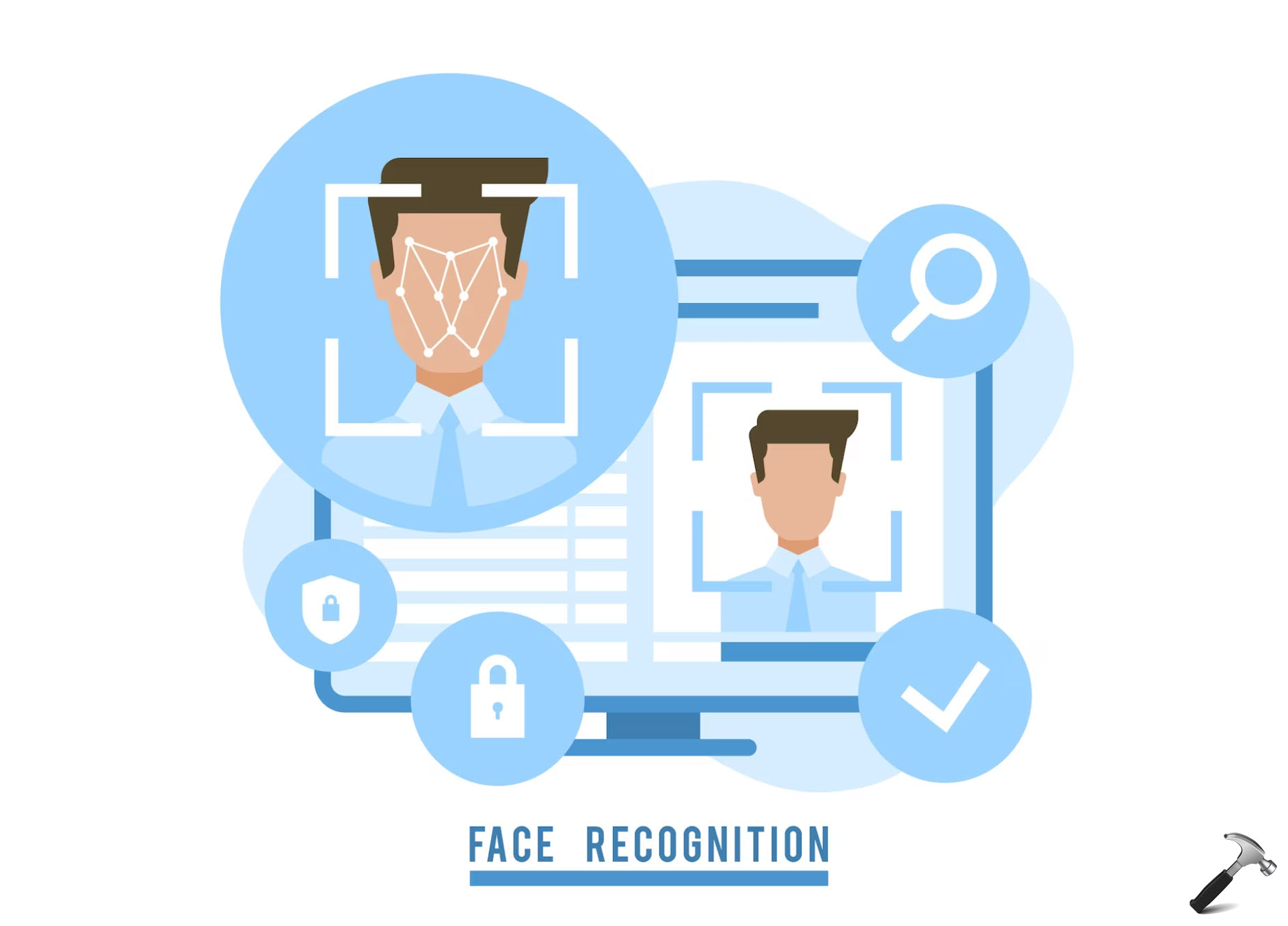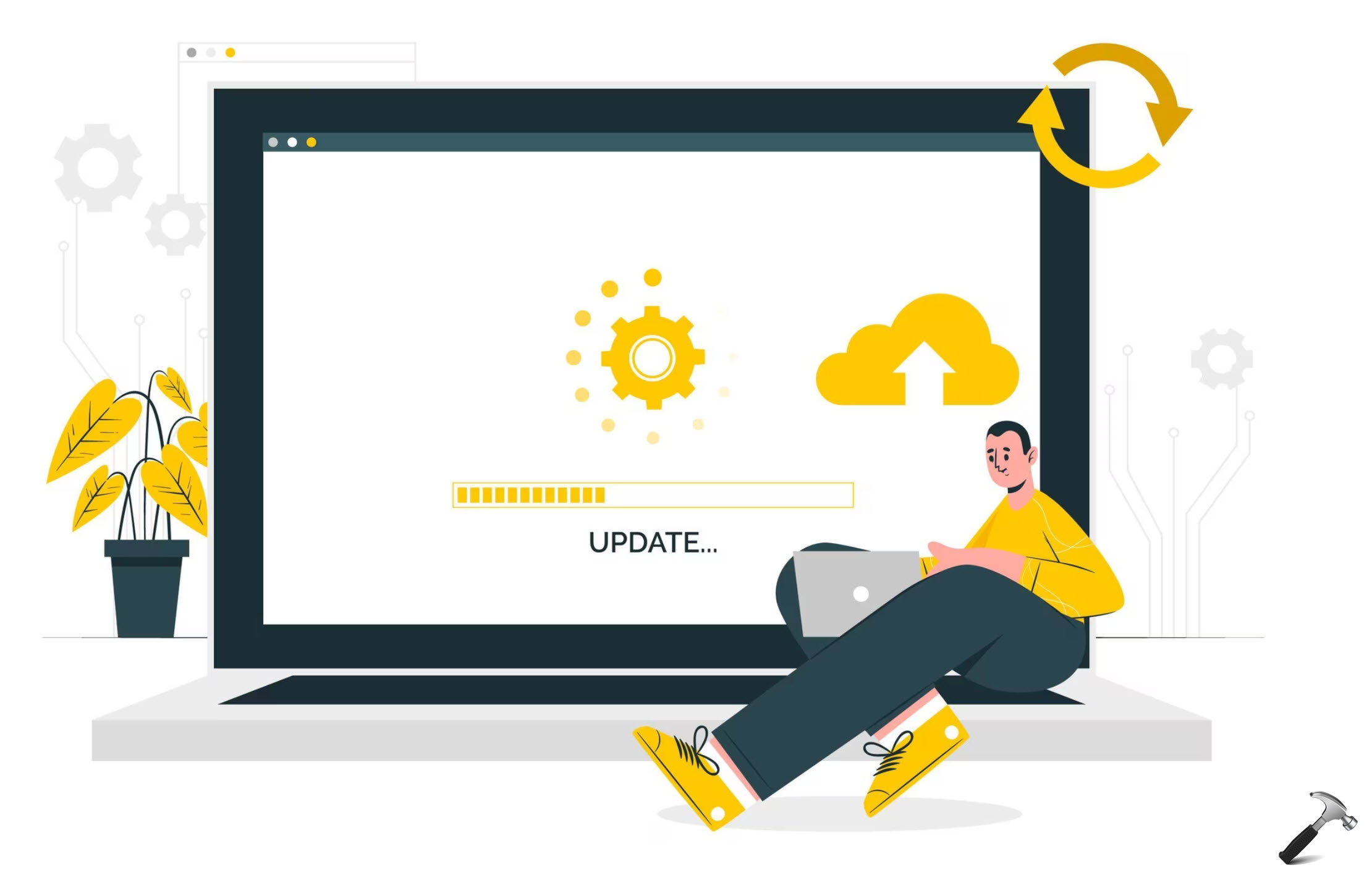File Explorer serves as an indispensable part of Windows 11. However, the new users of Windows might be stranger to the basic functionalities of File Explorer or even the existing users of File Explorer may be unknown to several advanced settings of File Explorer. Thus, it becomes very important to know all the information necessary in using File Explorer.
Page Contents
How to use File Explorer on Windows 11
This blog contains all the basic to advanced information regarding the usage of File Explorer aiding its users to utilize the app to its full potential. Hence, let us now look into all the functions of the File Explorer in details.
1. Opening File Explorer
The File Explorer can be opened using various methods. All of them are listed below-
Method 1- Right-clicking the Start button and choosing File Explorer.

Method 2- Pressing the icon of File Explorer present on the Taskbar.
![]()
Method 3- Opening the Start menu and searching File Explorer

Method 4- Typing Windows + E on the keyboard.
Method 5- Typing Windows + R and opening the Run Window. Thereafter, typing explorer and pressing OK.

2. Interface of File Explorer
Like every other application, File Explorer also consists of some main UI elements which its users must know of. Hence, let us now delve into the main components of the File Explorer window-

1. Main view- Here, the files and folders of the current path is visible. Double-clicking a file/folder will open it.

2. Ribbon- It consists of various tools of file management such as cut, delete, rename, filtering and sorting etc. for the present view of the users.
![]()
3. Search bar- It helps in searching items in the current view.

4. Tab bar- This element only exists in the newer versions of Windows and shows the titles of the tabs which are open. It even allows to shift between the tabs.
![]()
5. Navigation pane- The folder structure of the desktop is visible in this pane. It also highlights the present folder in the main view.

6. Address bar- The present path in the main view is seen in this bar. It also allows to go through the folder structure.

7. Navigations buttons- It consists of forward, up, refresh and back buttons.

3. Using tabs in File Explorer
To use the tabs in File Explorer in different ways, check the instructions that are listed below-
Moving files between tabs
To move files between tabs, follow the steps-
Step 1- At first, select and hold the movable file.

Step 2- Next, drag the file over to the desired tab and hold it still till the main view is switched to that particular tab.
Step 3- Further, drag the required file to the main view.
Opening a new tab
To open a new tab in File Explorer, either type Ctrl + T or select the plus (+) button on the tab bar.

Closing a tab
To close a tab, either press the tiny X button present close to the tab title or type Ctrl + W.

Opening a folder in a new tab
To open a folder in a new tab, right-click a folder in the navigation pane and select Open in new tab.

Reordering tabs
Firstly, to move tabs to a new window, select and drag the tab outside the window of File Explorer and thereafter release it. Also, to switch tabs on the tab bar, select and drag them to the desired location.

4. Copying files in File Explorer
Copying files/folders in File Explorer is extremely easy. Let us look at the steps to do it.
Step 1- Firstly, go to the file/folder that requires to be copied.
Step 2- Next, right-click the file/folder and from the context menu select the option of Copy. Apart from this, selecting the file/folder and typing Ctrl + C or pressing Copy in the ribbon will also copy the selected file/folder.

Step 3- Next, go the folder where the copied file is to be pasted.
Step 4- Now, right-click an empty area of the main view and select Paste to paste the recently copied file/folder. Apparently, pressing Paste in the ribbon or typing Ctrl + V will also paste a file/folder.

5. Viewing file extensions in File Explorer
To view the file extensions in File Explorer, follow the steps below-
Step 1- Firstly, select the View option from the ribbon.

Step 2- Lastly, go to Show > File name extensions.

6. Moving files in File Explorer
To move files in File Explorer, follow the steps given below-
Step 1- Primarily, go to the desired movable file/folder.
Step 2- Now, right-click the file/folder and select Cut from the context menu. Moreover, selecting the file and typing Ctrl + X or pressing Cut in the ribbon will also cut it.

Step 3- Further, visit the desired folder to paste the cut file.
Step 4- Next, right-click an empty area of the main view and select Paste. Typing Ctrl + V or pressing Paste from the ribbon will also paste the file.

7. Customizing Home page in File Explorer
The Home page of File Explorer consists of three primary sections- Recent, Quick Access, and Favorites. Hence, let us look the ways to customize the Home Page.
Hiding online files
The recent tab also showcases the files which are stored in OneDrive. To make only the local files visible, follow the steps below-
Step 1- First, press the three icons from the ribbon and select Options.

Step 2- Next, deselect Show files from Office.com and press OK.

Adding files to Favorites
Adding individual files to favorites will make them visible on the Home Page. To do the same, follow the steps-
Step 1- Firstly, select the file to add to favorites.
Step 2- Further, right-click the file and select Add to favorites.

Step 3- Next the file will appear under the Favorites section of the Home page.
Step 4- Now, to remove the file from the Favorites section, right-click it and select Remove from Favorites.

Pinning/Unpinning folders from Quick access
Quick access consists of pinned and mostly visited folders. Some folders such as Downloads, Pictures, etc. are pinned by default and can be unpinned. Thus, let us check how to pin/unpin a folder.
Step 1- Go to the folder wanting to pin and right-click it.
Step 2- Next, select Pin to Quick access.

Step 3- Further, to unpin the folder, right-click it and select Unpin from Quick access.

Hiding recent files
The instructions below will allow the users to hide the recently opened files which appear in the Recent section.
Step 1- Firstly, select the three dots on the ribbon and select Options.
Step 2- Next, deselect Show recently used files and press OK.

Hiding frequent folders
Following the measures given below will help in hiding the frequently visited folders from the section of Quick access.
Step 1- Primarily, press the three dots in the ribbon and select Options.
Step 2- Next, deselect Show frequently used folders and press OK.

8. Opening File Explorer to a different folder
To change the File Explorer to open to OneDrive storage page or the This PC page, check the steps provided below-
Step 1- At first, press the three dots in the ribbon section and select Options.
Step 2- Next, open the dropdown menu near Open File Explorer to and choose the desired location for the default opening.

9. Deleting files in File Explorer
To delete files in File Explorer, follow the steps given below-
Step 1- Primarily, go to the desired movable file/folder.

Step 2- Lastly, right-click the file/folder and press Delete. Moreover, selecting the file and pressing the Delete key or selecting Delete in the ribbon will also delete it.

10. Opening classic context menu in File Explorer
Let us now look how to open the classic context menu in File Explorer.
Step 1- First of all, right-click any file/folder of own choice.

Step 2- Secondly, select Show more options. Here, the classic context menu appears on the screen.

11. Using search in File Explorer
The File Explorer also lets its users to search for files whose location they might forget. Now, let us look at the steps to do the same-
Step 1- First, go to the desired folder to do the searching.
Step 2- Next, select the search bar on the top right and enter the searchable files. This will show the desired results in the main view.

Refining the search
The users of File Explorer can refine their search by adding additional filters to their search. Let us look how to do the same-
Step 1- Firstly, select the Search options from the ribbon.

Step 2- Next, select search only in the current folder or all subfolders as required.

Step 3- Further, to select a file depending upon the time it was last modified, select Date modified and to select a file depending upon its type select Kind. Apart from that to select a file depending upon its size range select Size.

Step 4- Moreover, there also exists other options such as Change indexed locations, Zipped (compressed) folders, File contents, etc. which helps in improving the search performance of the users.
12. Viewing hidden files in File Explorer
Following the steps below will allow the users of File Explorer to view the hidden files easily.
Step 1- Firstly, from the ribbon, select the View option.
Step 2- Next, go to Show > Hidden items.

13. Accessing network drives in File Explorer
The steps to follow to set up network drives in File Explorer are as follows-
Step 1- Firstly, from the navigation pane, select Network to see the available devices on the networks.

Step 2- Next, select the required device on the top section.
Step 3- Lastly, enter the login details and go through the files.
Moreover, to make a network folder easily accessible as a drive, mapping can also be done. Thus, go through the steps below to learn to do the same.
Step 1- At first, in the navigation pane, select This PC.
Step 2- Next, click the three dots and select Map network drive.

Step 3- Now, enter the address of the required folder wishing to map or select Browse to look for it in the network.

Step 4- Further, select Reconnect at sign-in to make the folder available anytime.
Step 5- As per requirement, select Connect using different credentials and press Finish.
14. Compressing files with File Explorer
The newer versions of Windows consists of a File Explorer which has an in-built compression tool. It allows the users to compress multiple files at one time. Now, let us check how to use this compression tool.
Step 1- First of all, press Ctrl to click multiple files and right-click any of the files and press Compress to.

Step 2- Next, for an easier compression, select any of the options between- TAR file, 7z file, and ZIP file.
Step 3- However, for more options, select Additional options > Browse. This will allow to find a location for the compressed file.

Step 4- Lastly, the user can make changes to the options of Archive format, Compression level, Compression method, etc. as per requirement for making changes to their compressed file.

15. Showing more folders in navigation pane
The following steps will aid the users in making the generally hidden folders (such as Recycle Bin, Control Panel, Libraries etc.) visible in File Explorer-
Step 1- Firstly, press the three icons from the ribbon and select Options.
Step 2- Next, shift to View tab and click Show all folders from below.

16. Resetting File Explore settings to default
Now, let us check the methods with the help of which we can invert all the changes that have been made to File Explorer and bring the settings to default.
Resetting the settings of Folder view
To reset the settings of folder view to default in File Explorer, follow the steps below-
Step 1- Firstly, in the ribbons section, press the three dots.
Step 2- Next, select Options > View > Reset Folders.

Step 3- Lastly, select OK and Restore Defaults to affirm the changes.
Resetting the settings of General view
Again, for resetting the settings of General view, follow the instructions below-
Step 1- Once again, in the ribbons section, press the three dots and select Options.

Step 2- Lastly, select Restore Defaults and press OK.
17. Customizing folder view in File Explorer
Let us now take a look into the diverse methods for changing the layout of File Explorer.
Optimizing folders
The layout of certain folders can be personalized easily with the help of following steps-
Step 1- Firstly, go to the desired folder wanting to customize.
Step 2- Next, press the three dots in the ribbon and select Properties.

Step 3- Further, shift to the tab of Customize. Thereafter, press the dropdown list and select the desired option located below Optimize this folder for.

Step 4- To optimize all the subfolders in similar way, select Apply this template to all subfolders and lastly press OK.
Changing the view layout
The steps given below will allow to change the layout of the main view in File Explorer-
Step 1- First, select the View button from ribbon.
Step 2- Next, select from any of the options including Small icons, List, Tiles, Contents, etc.

Changing folder icons
To alter the folder icons as per personal choice, follow the steps below-
Step 1- Firstly, go to the desired folder to customize.
Step 2- Further, press the three dots in ribbon and select Properties. Thereafter, shift to the Customize tab.

Step 3- Now, press Change icon and select an option which is available there or search for a personalized file if necessary and then press OK.

Disabling thumbnails of files
The users of File Explorer can also disable the thumbnails of files in File Explorer to satisfy their personal requirements. Let us check how to do the same-
Step 1- Firstly, press the three dots in the ribbon and select Options.
Step 2- Next go to View tab and select Always show icons, never thumbnails.

Step 3- Lastly, select Display file icon on thumbnails and press OK.
Enabling the Details/Preview pane
The top-right corner of the ribbon in File Explorer has the Details/Preview pane. The users can click it to enable it.

Moreover, to use the classic Preview pane follow the steps given below-
Step 1- First of all, select the View option in ribbon.
Step 2- Next, select Preview pane.

18. Using OneDrive in File Explorer
The OneDrive is an in-built feature of File Explorer in the newer versions of Windows. The OneDrive storage can be viewed in the navigation pane. It exists as the (Name) – Personal for users with personal accounts. Pressing it will allow to see the OneDrive files on the PC. Now, let us see the various ways to use the OneDrive in File Explorer-

Checking OneDrive storage and backing up files
Pressing the OneDrive icon in the address bar will allow to check the available OneDrive cloud storage. Furthermore, to back up files from PC to OneDrive, follow the steps-
Step 1- Firstly, from the address bar, select Start backup.

Step 2- Next, select the required folders to back up to OneDrive and select Start backup.

Checking availability of files
To check whether the files are available in the cloud storage only or are available offline also, check the various icons present near the files, which are as follows-
a. A file/folder which is always available offline appears as a green circle with a white checkmark.

b. A file which is only available online is represented with a cloud icon.

c. A file/folder available offline is represented with a white circle with a green checkmark.

d. A download progress bar indicates online file/folder which are presently being downloaded.
e. A file which is stored offline and is being synced to OneDrive is represented with a pair of arrows in the form of a circle.

Freeing up space
The files in OneDrive are generally kept online but are downloaded while first being opened and kept offline. Now, to download these files manually and keep them offline, follow the steps given below-
Step 1- Firstly, right-click the file/folder wanting to keep offline.
Step 2- Next, select Always keep on this device.

Again, to free up space in the PC, follow these steps-
Step 1- Primarily, right-click the files available offline.
Step 2- Select Free up space.

Though there is a lot more to File Explorer, but hope so these blog has been able to provide the basic knowledge of File Explorer and how to use it for various purposes.
![KapilArya.com is a Windows troubleshooting & how to tutorials blog from Kapil Arya [Microsoft MVP (Windows IT Pro)]. KapilArya.com](https://images.kapilarya.com/Logo1.svg)












Leave a Reply